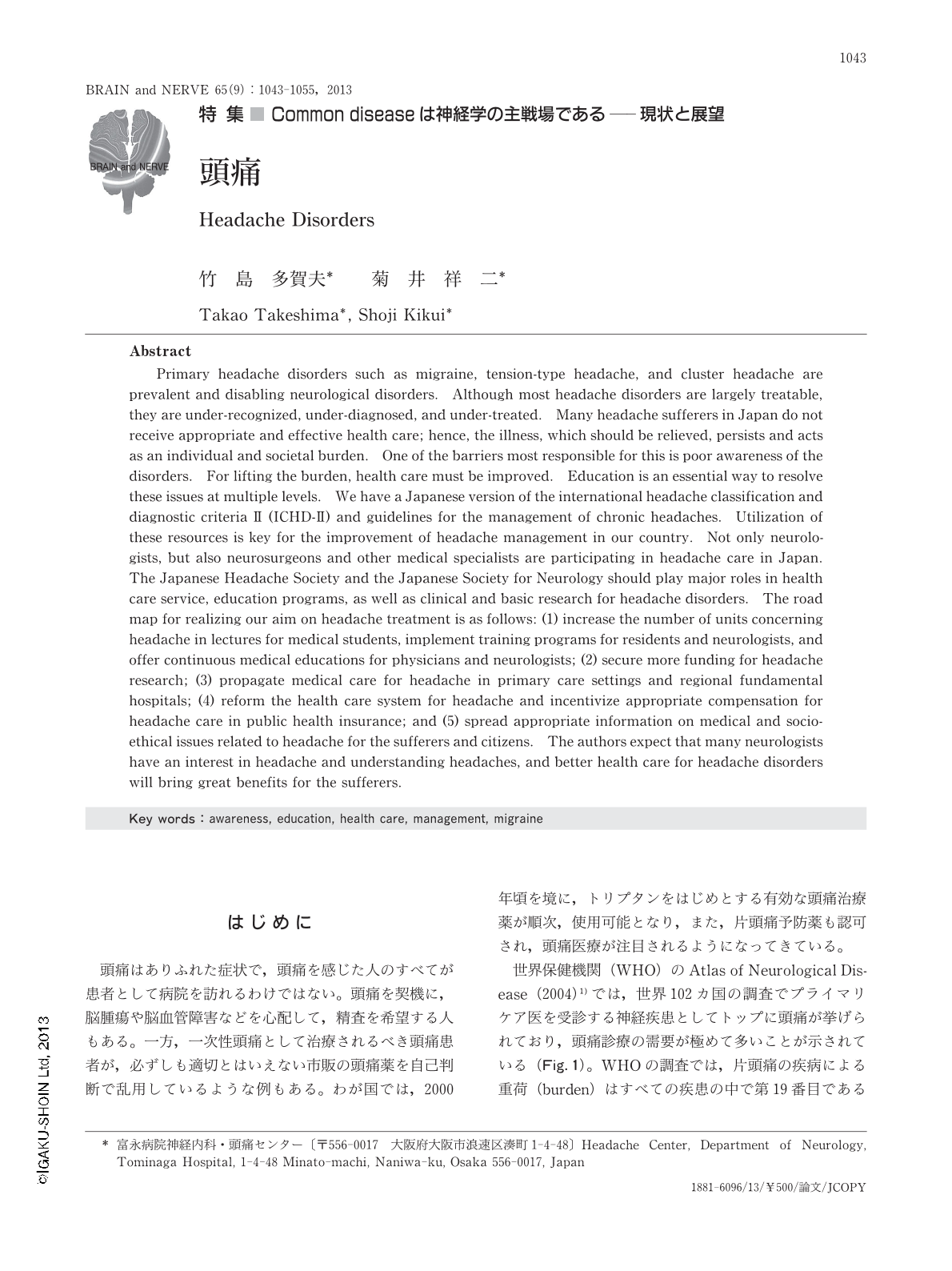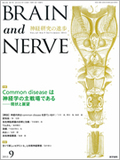Japanese
English
- 有料閲覧
- Abstract 文献概要
- 1ページ目 Look Inside
- 参考文献 Reference
はじめに
頭痛はありふれた症状で,頭痛を感じた人のすべてが患者として病院を訪れるわけではない。頭痛を契機に,脳腫瘍や脳血管障害などを心配して,精査を希望する人もある。一方,一次性頭痛として治療されるべき頭痛患者が,必ずしも適切とはいえない市販の頭痛薬を自己判断で乱用しているような例もある。わが国では,2000年頃を境に,トリプタンをはじめとする有効な頭痛治療薬が順次,使用可能となり,また,片頭痛予防薬も認可され,頭痛医療が注目されるようになってきている。
世界保健機関(WHO)のAtlas of Neurological Disease(2004)1)では,世界102カ国の調査でプライマリケア医を受診する神経疾患としてトップに頭痛が挙げられており,頭痛診療の需要が極めて多いことが示されている(Fig.1)。WHOの調査では,片頭痛の疾病による重荷(burden)はすべての疾患の中で第19番目であると記載されている。さらに,WHOからAtlas of headache disorders and resources in the world 20112)が公開されている。このAtlasに集められた情報が,グローバルに世界各国における頭痛性疾患に対する意識を高め,頭痛の診療の質的向上に寄与することが大きな目標として掲げられている。
本稿ではまず一次性頭痛の疫学と概要を示し,次にこのAtlasのデータを紹介し,わが国の現状と国際的な状況を対比しながら,神経内科における頭痛医療の方向性について考察する。
Abstract
Primary headache disorders such as migraine, tension-type headache, and cluster headache are prevalent and disabling neurological disorders. Although most headache disorders are largely treatable, they are under-recognized, under-diagnosed, and under-treated. Many headache sufferers in Japan do not receive appropriate and effective health care; hence, the illness, which should be relieved, persists and acts as an individual and societal burden. One of the barriers most responsible for this is poor awareness of the disorders. For lifting the burden, health care must be improved. Education is an essential way to resolve these issues at multiple levels. We have a Japanese version of the international headache classification and diagnostic criteria II (ICHD-II) and guidelines for the management of chronic headaches. Utilization of these resources is key for the improvement of headache management in our country. Not only neurologists, but also neurosurgeons and other medical specialists are participating in headache care in Japan. The Japanese Headache Society and the Japanese Society for Neurology should play major roles in health care service, education programs, as well as clinical and basic research for headache disorders. The road map for realizing our aim on headache treatment is as follows: (1) increase the number of units concerning headache in lectures for medical students, implement training programs for residents and neurologists, and offer continuous medical educations for physicians and neurologists; (2) secure more funding for headache research; (3) propagate medical care for headache in primary care settings and regional fundamental hospitals; (4) reform the health care system for headache and incentivize appropriate compensation for headache care in public health insurance; and (5) spread appropriate information on medical and socio-ethical issues related to headache for the sufferers and citizens. The authors expect that many neurologists have an interest in headache and understanding headaches, and better health care for headache disorders will bring great benefits for the sufferers.

Copyright © 2013, Igaku-Shoin Ltd. All rights reserved.


